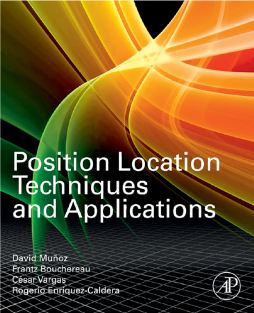
BOOK
Position Location Techniques and Applications
David Munoz | Frantz Bouchereau Lara | Cesar Vargas | Rogerio Enriquez-Caldera
(2009)
Additional Information
Book Details
Abstract
This book is the definitive guide to the techniques and applications of position location, covering both terrestrial and satellite systems. It gives all the techniques, theoretical models, and algorithms that engineers need to improve their current location schemes and to develop future location algorithms and systems.
Comprehensive coverage is given to system design trade-offs, complexity issues, and the design of efficient positioning algorithms to enable the creation of high-performance location positioning systems. Traditional methods are also reexamined in the context of the challenges posed by reconfigurable and multihop networks. Applications discussed include wireless networks (WiFi, ZigBee, UMTS, and DVB networks), cognitive radio, sensor networks and multihop networks.
Features
- Contains a complete guide to models, techniques, and applications of position location
- Includes applications to wireless networks, demonstrating the relevance of location positioning to these "hot" areas in research and development
- Covers system design trade-offs and the design of efficient positioning algorithms, enabling the creation of future location positioning systems
- Provides a theoretical underpinning for understanding current position location algorithms, giving researchers a foundation to develop future algorithms
David Muñoz is Director and César Vargas is a member of the Center for Electronics and Telecommunications, Tecnológico de Monterrey, Mexico. Frantz Bouchereau is a senior communications software developer at The MathWorks Inc. in Natick, MA. Rogerio Enríquez-Caldera is at Instituto Nacional de Atrofisica, Optica y Electronica (INAOE), Puebla, Mexico.
- Contains a complete guide to models, techniques and applications of position location
- Includes applications to wireless networks (WiFi, ZigBee, DVB networks), cognitive radio, sensor networks and reconfigurable and multi-hop networks, demonstrating the relevance of location positioning to these ‘hot’ areas in research and development
- Covers system design trade-offs, and the design of efficient positioning algorithms enables the creation of future location positioning systems
- Provides a theoretical underpinning for understanding current position location algorithms, giving researchers a foundation to develop future algorithms
"This book has a wider potential audience than communications engineers. Anyone involved in scanners, such as medical ultrasound instruments or robotic world-map builders for autonomous mobile vehicles, will have a possible interest in this book because the authors present their material in tutorial form, making it possible to benefit from the basic principles without being a communications specialist. It is also a potentially useful book for social dissidents who are interested in defeating or neutralizing Big Brother technology in a police state, including engineers who seek privacy from government or commercial snooping. Some familiarity with stochastic processes in electronics aids in comprehending book content, though one need not be an expert in signal estimation to benefit from the concepts presented in this book." - Dennis L Feucht, EN-Genius Network
